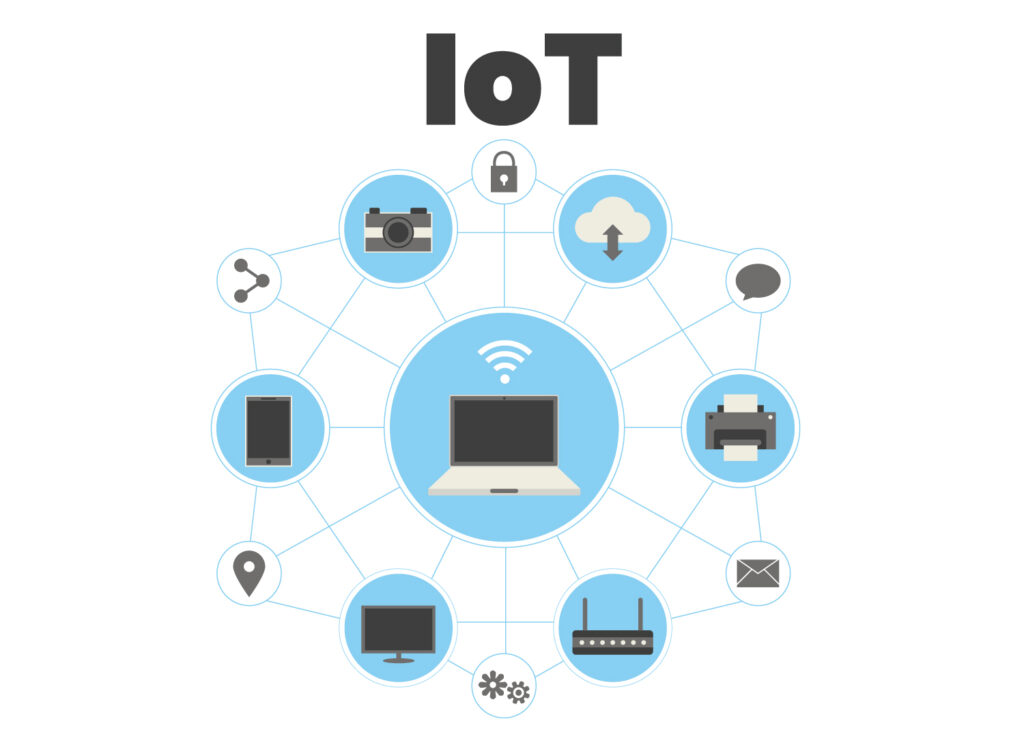The Dos and Don’ts of Email Marketing in 2023: A Comprehensive Guide

As we navigate through 2023, email marketing remains a cornerstone of digital marketing strategies for businesses of all sizes.
Despite the growth of social media and other communication platforms, email continues to provide a reliable and effective way to reach audiences and build lasting relationships.
However, as technology evolves and consumer preferences change, it’s crucial for marketers to stay up-to-date with the latest trends and best practices in email marketing.
In this comprehensive guide, we will explore the essential dos and don’ts of email marketing in 2023, equipping you with the knowledge you need to create successful campaigns that engage, convert, and foster brand loyalty.
The Dos of Email Marketing in 2023
1. Personalization and Segmentation
In today’s highly competitive digital landscape, consumers crave personalized experiences that cater to their unique interests and needs.
By combining personalization and segmentation, you can ensure that your email marketing campaigns resonate with your audience, providing them with the tailored and relevant content they crave, and ultimately leading to higher engagement, conversion, and customer retention.
Personalization
Personalization involves using subscriber data to tailor your email content, making it more relevant and appealing to each individual.
This can include addressing subscribers by their first name, sending personalized product recommendations, or including content that aligns with their preferences and browsing history.
Personalized emails not only capture your subscribers’ attention but also make them feel valued and understood, ultimately driving higher engagement and conversion rates.
Segmentation
Segmentation, on the other hand, refers to the practice of dividing your email list into smaller groups based on shared characteristics, such as demographics, purchase history, or engagement levels.
By segmenting your audience, you can create targeted campaigns that address specific needs or interests, leading to more effective communication and better overall results.
For example, you can send a promotional email to subscribers who have abandoned their shopping carts or share relevant industry news with subscribers who have shown interest in a particular topic.
2. Mobile Optimization
In 2023, with the majority of email opens occurring on mobile devices, it’s crucial to prioritize mobile optimization for your email campaigns. Mobile-optimized emails ensure a seamless user experience, regardless of the device or platform used by your subscribers.
First, implement a responsive email design, which automatically adjusts the layout, font sizes, and images to fit various screen sizes. This guarantees that your content is easily readable and visually appealing on smartphones, tablets, and desktops alike.
Secondly, test your emails across different devices and email clients to identify and resolve any display or functionality issues. Pay attention to elements like button sizes, line spacing, and image loading times to make sure your email is accessible and enjoyable for mobile users.
By optimizing your emails for mobile, you enhance the user experience for a growing segment of your audience, ultimately leading to higher engagement, click-through rates, and conversions.
3. Valuable and Engaging Content
To excel in email marketing, prioritize delivering valuable, engaging content tailored to your subscribers’ interests.
Offer informative articles, helpful tips, and exclusive promotions while incorporating interactive elements like polls, surveys, or videos.
Combining valuable information with engaging components creates memorable experiences that foster brand loyalty, drive engagement, and contribute to your marketing success, setting your campaigns apart from the competition.
4. Data-driven Strategies
In today’s data-centric world, leveraging data-driven strategies is key to optimizing your email marketing campaigns. By analyzing performance metrics and making informed decisions, you can refine your campaigns and enhance overall results.
Begin by monitoring key performance indicators (KPIs) such as open rates, click-through rates, conversion rates, and unsubscribe rates. These metrics help you gauge the effectiveness of your campaigns and identify areas for improvement.
Next, conduct A/B testing on various email elements like subject lines, content, layout, and send times. By comparing the performance of different variations, you can identify what resonates best with your audience and optimize future campaigns accordingly.
By employing data-driven strategies, you make informed decisions that lead to better-targeted, more effective email campaigns, ultimately boosting engagement, conversions, and return on investment (ROI).
5. Compliance with Privacy Regulations
Make sure that you obtain explicit consent from users before adding them to your email list. Implement a double opt-in process, requiring subscribers to confirm their email address and consent to receive communications from you.
Next, provide subscribers with the option to manage their preferences and easily unsubscribe from your email list. This demonstrates respect for their privacy and ensures that you are only sending content to those genuinely interested in your brand.
Additionally, be transparent about the data you collect and how it’s used. Include a clear and concise privacy policy, outlining your data collection, storage, and usage practices, and ensure it’s easily accessible to your subscribers.
By adhering to privacy regulations and promoting transparency, you build trust with your audience and maintain a positive brand reputation, ultimately contributing to the long-term success of your email marketing efforts.
The Don’ts of Email Marketing in 2023
1. Avoiding Spammy Tactics
To prevent spammy tactics in email marketing, it’s essential to use clear, concise, and relevant subject lines that truthfully reflect the email’s content.
Personalize your emails by addressing recipients by name and tailoring content to their interests, ensuring a more authentic connection. By focusing on delivering valuable and engaging content while respecting your subscribers’ preferences and privacy, you can foster trust and maintain a positive brand reputation.
2. Neglecting List Hygiene
Maintaining a healthy email list is crucial for the success of your email marketing campaigns. Neglecting list hygiene can lead to decreased engagement, lower deliverability rates, and damage to your brand’s reputation. Therefore, it’s important to implement list hygiene practices regularly.
Start by removing inactive subscribers who haven’t engaged with your emails in a while. These subscribers may not be interested in your content anymore and could negatively impact your email engagement rates.
Implement a double opt-in process, requiring subscribers to confirm their email address and consent to receive communications from you. This not only helps prevent spam complaints but also ensures you have accurate and engaged subscribers on your email list.
Regularly clean your email list to remove invalid email addresses and bounced emails. These types of email addresses can negatively affect your deliverability rates, and it’s best to remove them from your list.
3. Overwhelming Subscribers with Emails
Don’t do multiple follow-ups. That’s not a wise approach. If the majority of your recipients start marking your emails as spam, it’s not a good sign. Why? Your email campaigning platform might penalize you or suspend your account and google may mark your email address as spam and that might affect your domain’s authority if you’re sending emails through a google workspace email address.
Bombarding your subscribers with excessive email campaigns can lead to lower engagement rates, increased unsubscribes, and ultimately damage to your brand’s reputation. Therefore, it’s essential to strike a balance between engaging with your audience and respecting their inbox.
4. Failing to Measure and Track Results
Conduct A/B testing on various email elements such as subject lines, content, layout, and images, to determine what resonates best with your audience. Comparing the performance of different variations enables you to optimize future campaigns based on these findings.
Use marketing automation tools that offer advanced analytics and data-driven recommendations to further enhance your email marketing efforts. These tools provide detailed insights into your campaigns, enabling you to track engagement rates and identify areas for improvement.
By measuring and tracking results, you can identify what’s working and what’s not, make informed decisions, and optimize your campaigns for better results. It’s a critical component of successful email marketing, and neglecting it can hinder the growth and effectiveness of your campaigns.
5. Disregarding Email Deliverability Best Practices
Email deliverability is crucial to the success of your email marketing campaigns. Neglecting email deliverability best practices can result in emails not reaching your subscribers’ inboxes, leading to lower engagement rates, and ultimately, reduced effectiveness of your campaigns.
Firstly, ensure that you have proper email authentication set up, including SPF, DKIM, and DMARC. These protocols help authenticate your emails, reducing the likelihood of them being flagged as spam or phishing attempts.
Maintain a healthy sender reputation by regularly cleaning your email list, removing bounced emails and inactive subscribers, and adhering to email privacy regulations.
The Takeaway
As email marketing continues to evolve in 2023, businesses must adapt to current trends and best practices to create successful campaigns that engage, convert, and foster brand loyalty. By following the essential dos and don’ts of email marketing, you can ensure that your campaigns resonate with your audience, ultimately leading to higher engagement, conversion rates, and return on investment (ROI).
By prioritizing these elements and continuously monitoring performance metrics, testing, and optimizing, you can build lasting relationships with your audience and achieve long-term success with your email marketing efforts.




